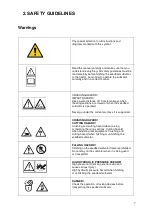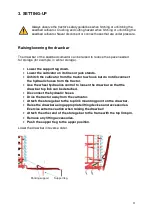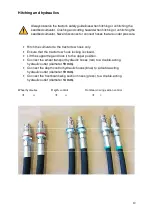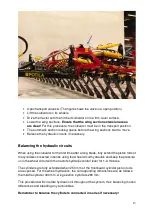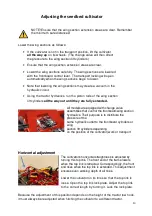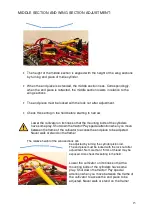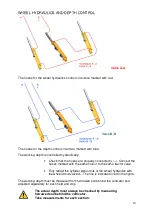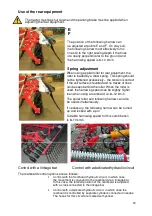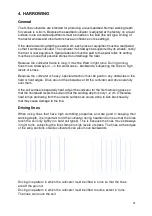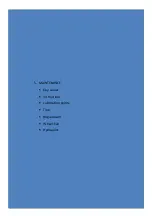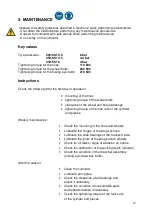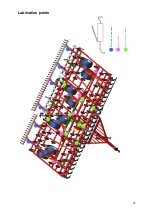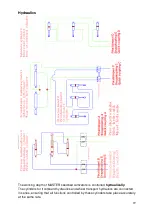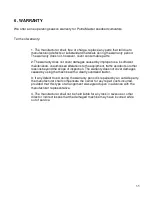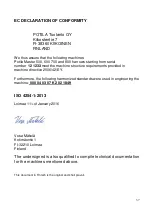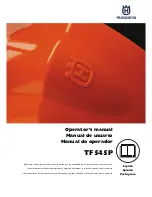
21
4.
HARROWING
General
The S-tine cultivators are intended for producing a level seedbed. Normal working depth
for cereals is 0–6 cm. Because the seedbed cultivator is adjusted at the factory on a level
surface, more accurate adjustments must be made on the field (the soil type, sinking of
the tractor wheels and other factors have an influence on the settings).
If the desired working depth exceeds 6 cm, each piece of equipment must be readjusted
so that it works as intended. The cultivator must always be supported by its wheels, not by
the front or rear equipment. Special attention must be paid to the spiral roller: its setting
must be so loose that possible stones do not damage the roller.
Because the cultivator frame is long, it must be lifted in tight turns. During turning,
tines move sideways or – in the worst case – backwards, subjecting the tines to high
levels of stress.
Because the cultivator is heavy, special attention must be paid on any obstacles in the
field or field edges. Drive around the obstacles or lift the cultivator and drive carefully
over them.
If the soil surface is especially hard, adjust the cultivator for the first harrowing pass so
that the frontboard levels the soil and that the working depth is only 1–2 cm. Otherwise,
hard lumps protruding from the uneven surface can cause a tine to kick back heavily
that may cause damage to the tine.
Driving lines
When using tines that have high crumbling properties and are good in keeping their
working depth, it is important to lift the cultivator during headland turns so that the tines
touch the soil only lightly (on hard soil types). This is because the tines move sideways
in tight turns, subjecting the tine clamps to high levels of stress. The tines at the edges
of the wing sections of wide cultivators can also move backwards.
Driving line pattern in which the cultivator must be lifted in turns so that the tines
are off the ground.
Driving line pattern in which the cultivator must be lifted to some extent in turns.
The tines can touch the soil.
Summary of Contents for MASTER 500
Page 3: ...3 1 INTRODUCTION Intended use Technical specifications...
Page 6: ...6 2 SAFETY GUIDELINES Warnings Transport on roads...
Page 20: ...20 4 HARROWING a General b Driving lines...
Page 25: ...25 Lubrication points One time in a season Every week Two times in a week...
Page 32: ...32 6 WARRANTY...
Page 34: ...7 EC Declaration of Conformity...

